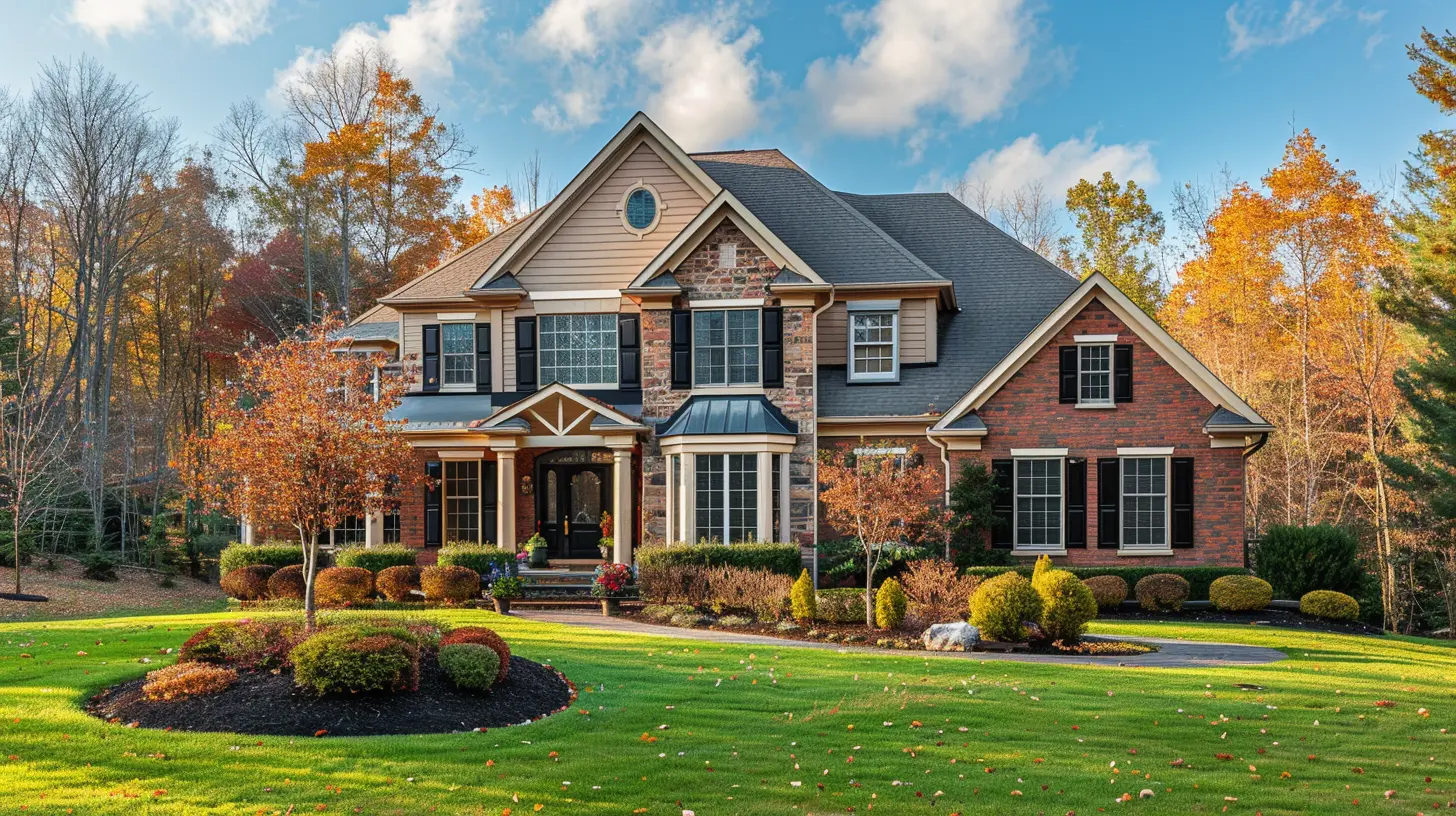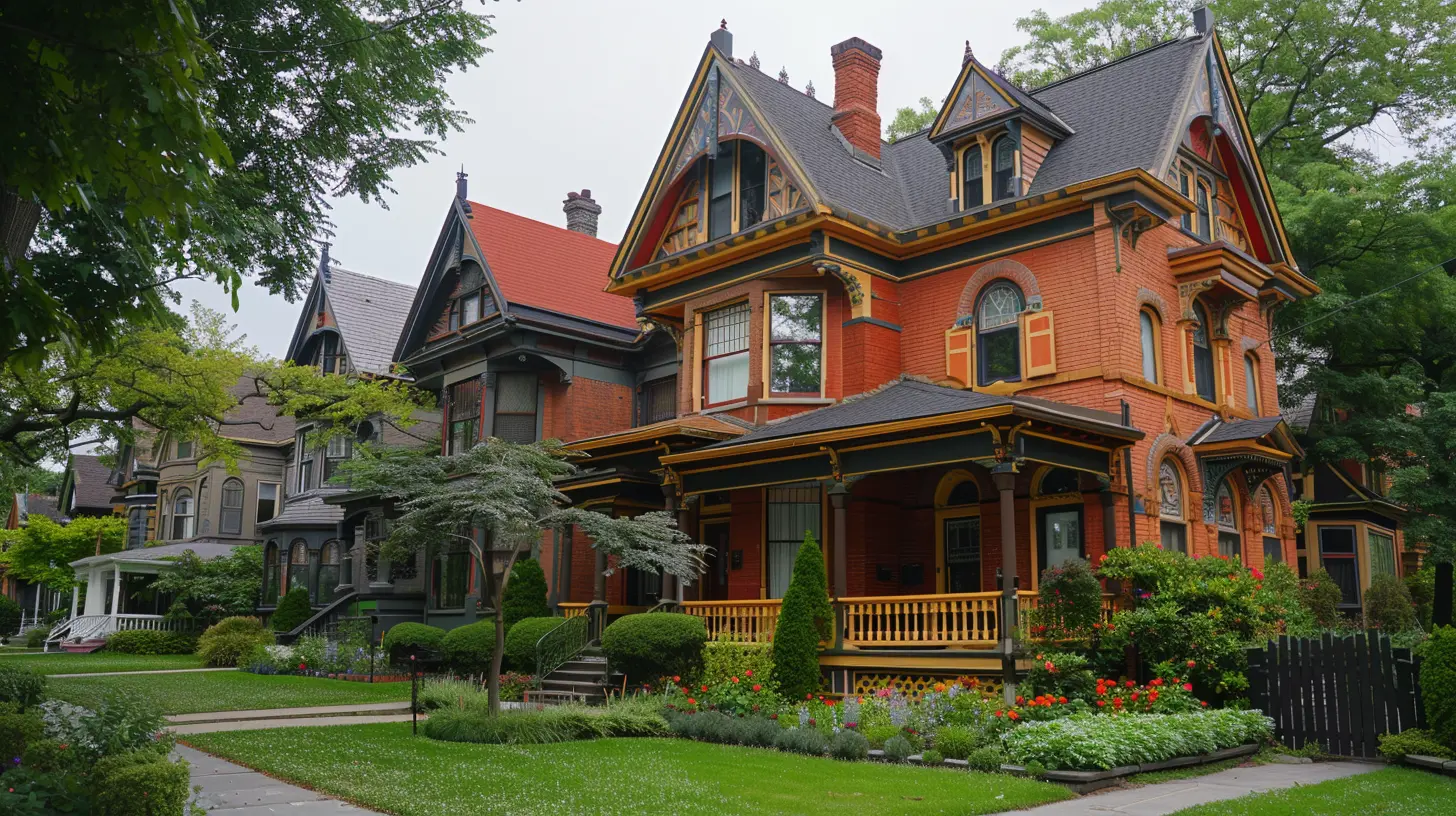Key Features to Look for in a Family-Friendly Neighborhood
27 May 2025
Finding the perfect home is one thing, but making sure it’s in a family-friendly neighborhood? That’s a whole different ballgame. The right community can make all the difference in your family’s happiness, security, and convenience.
But what exactly makes a neighborhood ideal for families? Is it the presence of good schools? Safe streets? Friendly neighbors? The truth is, it’s a combination of several factors. Let’s dive into the key features you should look for when searching for a family-friendly neighborhood. 
1. Low Crime Rates and Overall Safety
Safety is a non-negotiable when it comes to choosing a neighborhood for your family. You want to live in a place where you can let your kids play outside without constantly worrying.- Check local crime reports or use online resources like NeighborhoodScout or CrimeMapping.
- Drive around at different times of the day to see if the area feels secure.
- Talk to potential neighbors—they’ll give you honest insights about the safety of the community.
A safe neighborhood creates peace of mind, allowing your family to enjoy everyday life without unnecessary stress. 
2. Top-Rated Schools Nearby
Even if you don’t have school-aged children yet, a neighborhood with excellent schools is always a plus. Why? Because quality schools reflect a strong community—and they boost property values over time.- Look for highly rated public and private schools in the area.
- Consider the school’s extracurricular activities, student-teacher ratio, and overall reputation.
- Check online reviews and reach out to other parents for feedback.
A great school district can shape your child’s future and provide a solid foundation for their academic success. 
3. Parks, Playgrounds, and Green Spaces
Kids need space to run, explore, and just be kids. A family-friendly neighborhood should have parks, playgrounds, and walking trails nearby.- Playgrounds with safe, modern equipment are a great sign.
- Look for parks with open green spaces for picnics and outdoor activities.
- Walking and biking trails make it easier to enjoy nature without traveling far.
Having access to outdoor spaces encourages an active lifestyle and gives families a chance to bond outside the home. 
4. Low Traffic and Pedestrian-Friendly Streets
Ever tried walking around a neighborhood where cars speed past every few seconds? It’s not exactly comforting when you have young children.- Look for pedestrian-friendly streets with sidewalks and crosswalks.
- Check for speed bumps and traffic-calming measures.
- Pay attention to how drivers behave in the area—do they slow down in residential streets?
A safe walking environment means your kids can ride bikes, walk to school, or play outside without constant danger.
5. A Strong Sense of Community
A neighborhood isn’t just about the houses—it’s about the people. A great family-friendly community is one where neighbors know (and look out for) each other.- Visit local events, farmers' markets, or community gatherings to get a feel for the area.
- Check if the neighborhood has a social media group where residents stay connected.
- Talk to neighbors and see if they’re welcoming and friendly.
A close-knit community makes parenting easier because you’ll have support, friendships, and a safe environment for your kids to grow up in.
6. Proximity to Essential Amenities
Convenience matters. Nobody wants to drive an hour just to buy groceries or see a doctor.- Check for grocery stores, pharmacies, and healthcare facilities nearby.
- See if there are family-friendly restaurants and cafés in the area.
- Look for daycare centers, libraries, and community centers that cater to families.
A neighborhood that has everything your family needs within a short distance saves time and makes daily life smoother.
7. Kid-Friendly Entertainment and Activities
Keeping kids entertained can be a full-time job. That’s why having fun activities nearby is a huge plus.- Look for recreational centers, sports leagues, or kids' clubs.
- Check for museums, zoos, or amusement parks within easy driving distance.
- See if the neighborhood has seasonal events like festivals, holiday parades, or outdoor movie nights.
A neighborhood with plenty of activities ensures your kids stay engaged, learn new things, and have fun outside of school.
8. Reliable Public Transportation and Good Commute Times
Even if you drive, having access to public transportation can make life easier—especially when your kids get older and start traveling on their own.- Check for nearby bus stops, train stations, or bike-sharing options.
- Research traffic patterns to see if commuting to work or school is manageable.
- Consider how long it takes to reach important places like hospitals, shopping centers, and entertainment spots.
A well-connected neighborhood keeps life stress-free and reduces the hassle of long, tiresome commutes.
9. Future Growth and Property Value
Investing in a home isn’t just about the present—it’s about the future too. A neighborhood with strong growth potential will benefit your family in the long run.- Look for new developments, upcoming businesses, and planned infrastructure projects.
- Research past property value trends to see if the area is appreciating.
- See if the community is attracting families, young professionals, or retirees—this indicates demand.
A thriving neighborhood means your home will hold (or increase) its value, giving you great returns if you ever decide to move.
10. Diversity and Inclusivity
A family-friendly neighborhood should feel welcoming to everyone, regardless of background, culture, or beliefs.- Observe the community and check if it has a mix of people from different backgrounds.
- Look for inclusive events and programs that celebrate diversity.
- Ensure the local schools embrace multicultural education and offer a supportive environment for all students.
A diverse neighborhood exposes kids to different perspectives, making them more open-minded and adaptable as they grow up.
Final Thoughts
Choosing the perfect family-friendly neighborhood isn’t just about buying a house—it’s about creating a nurturing environment for your loved ones. From safety to schools, green spaces to community vibes, every detail matters when shaping your family's future.So, as you search for your dream neighborhood, take your time and evaluate these key factors. After all, a great home in the wrong neighborhood won’t feel like home at all.
Here’s to finding the perfect place for your family to grow, thrive, and make lifelong memories!
all images in this post were generated using AI tools
Category:
Real Estate TipsAuthor:

Elsa McLaurin
Discussion
rate this article
4 comments
Paul Dorsey
Like a well-baked pie, a family-friendly neighborhood needs the right ingredients: safe streets, parks sprinkled with laughter, and schools that nurture little geniuses. Don’t forget the secret spice—friendly neighbors!" 🏡🥧✨
June 10, 2025 at 12:31 PM

Elsa McLaurin
Absolutely! A perfect neighborhood truly is a recipe for happiness and growth. 🌟
Georgina McNaughton
When house hunting for a family-friendly neighborhood, remember: if the local kids' laughter doesn't echo like a charming symphony and the parks are more abundant than pizza places, you might just have struck neighborhood gold! 🍕🏡🎶
June 5, 2025 at 2:30 AM

Elsa McLaurin
Absolutely! Vibrant parks and joyful kids' laughter are key indicators of a family-friendly community. 🍕🏡🎶
Simon McLemore
Prioritize access to schools, parks, safety, and community amenities for an ideal family-friendly neighborhood.
June 3, 2025 at 10:46 AM

Elsa McLaurin
Absolutely! Access to schools, parks, and safety is crucial for fostering a vibrant, family-friendly community. These amenities promote a healthy, engaged lifestyle for families.
Elowis McDonald
Look for a neighborhood where kids can safely ride bikes and parents can dodge soccer balls. Bonus points if there's pizza within walking distance!
June 1, 2025 at 7:04 PM

Elsa McLaurin
Absolutely! Safety, recreational spaces, and convenient dining options are essential for a family-friendly neighborhood.



